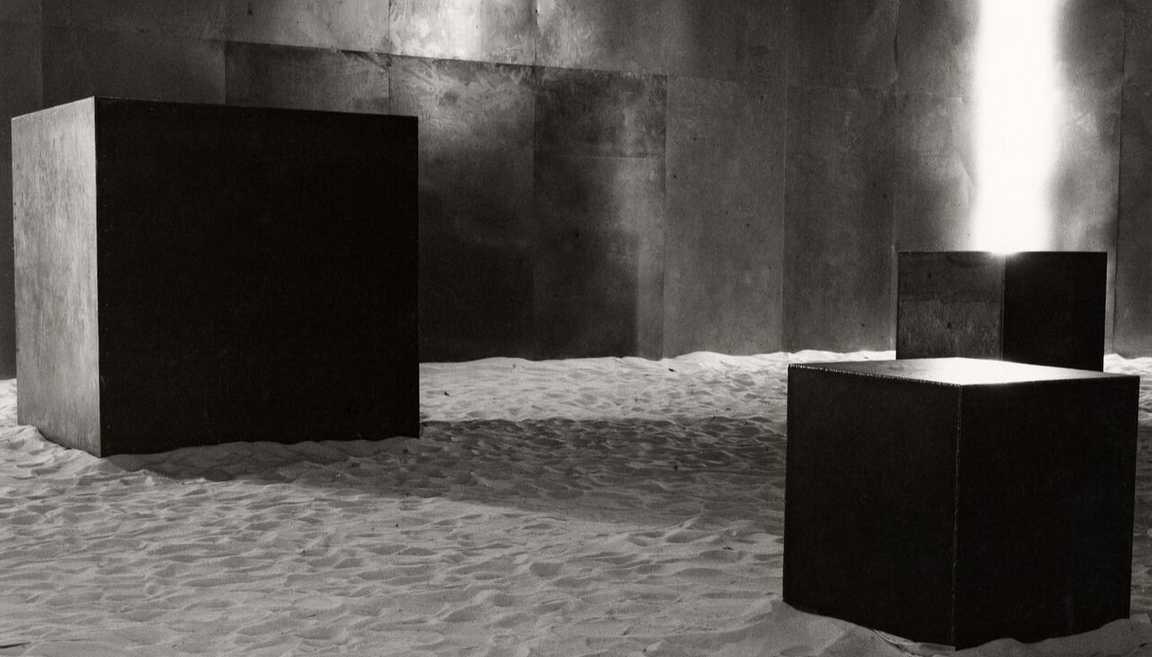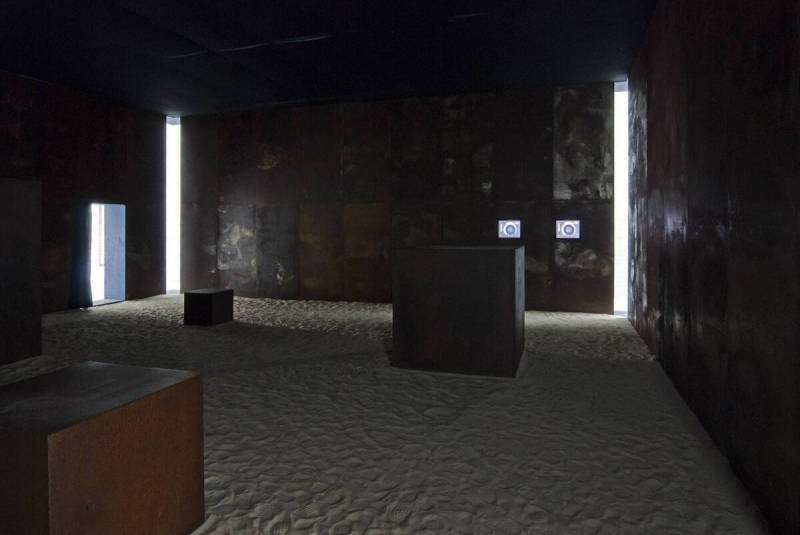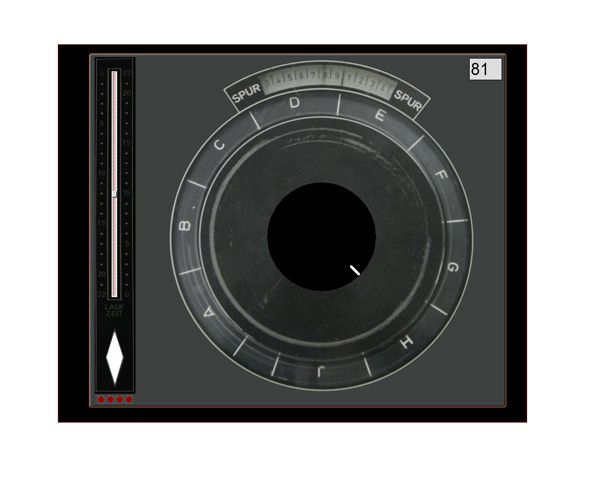
Kubusproject (1969-1971) - Ton Bruynèl
In the collection of the Kröller-Müller Museum.
Ton Bruynèl’s Kubusproject (1969-1971), created in collaboration with sculptor Carel Visser, is an interactive audio installation that blends sound and sculpture to produce a multisensory experience. Recently, the conservation team at LI-MA collaborated with the Kröller-Müller Museum to explore the challenges of preserving and displaying Kubusproject for future audiences. This project, conducted between May and September 2024, addressed how best to safeguard the work's physical components and digital features while honouring the artist’s original vision for an immersive, tactile experience.
Brief Description of the Work
Kubusproject is an immersive installation centred around Bruynèl’s composition recorded on two 81-track tape recorders, with sound resonating through four steel cubes positioned within a 10 x 10-metre steel room. Visitors interact with the installation by adjusting tracks on the original tape recorders, which were replaced by touchscreens and computer interfaces during the 2008 restoration. This interactivity allows users to experience different layers of Bruynèl’s musique concrète-inspired composition. This distinctive setup utilises audio transducers (sonic exciters) that vibrate the cubes, creating sound without traditional speakers and giving the installation its distinctive “feedback loop of vibrations.”
The installation was only exhibited twice in the 1970s, before being preserved by Felix and Alice Visser, close friends of Bruynèl, and eventually donated to the Kröller-Müller Museum. The 2008 restoration reintroduced the piece to the public with modernised digital elements to approximate its original interactive design.

Addressing the Work’s Storage and Display Needs
The Kubusproject case study provided an in-depth analysis of preservation strategies for complex media works that require a combination of physical and digital storage. This initiative is part of LI-MA’s broader mission to explore sustainable conservation for digital art, alongside analysis and documentation. Central questions explored in the study included:
-
How does the restored version differ from the original work?
-
Are additional conservation efforts needed to ensure it is exhibition-ready?
-
Have the 2008 digital components held up over time, or are updates necessary?
-
Did the 2008 exhibition successfully recreate Bruynèl’s vision?
These questions framed an examination of Kubusproject’s conservation needs and served as a model for other works requiring hybrid preservation strategies.
A Lifetime of Timbre: The Artist’s Vision and Technique
Ton Bruynèl, a Dutch composer influenced by the French movement musique concrète, developed his unique style by working with raw sound as a compositional element. For Kubusproject, Bruynèl created a loop of sound generation and resonance, vibrating the steel walls of the cubes through audio transducers. This distinctive approach avoided traditional speakers and instead produced sound by resonating the cube surfaces. The result is a compelling sonic experience that invites direct engagement with the audio environment. His method inspired the installation’s interactivity, making it a rare example of tactile immersion in electronic music.
Challenges of Restoration and Obsolescence
After Kubusproject’s initial exhibitions, it remained in private storage for over three decades until the Kröller-Müller Museum undertook an extensive restoration in 2008. This effort addressed both physical deterioration—significant corrosion in the steel components—and technological obsolescence. To safeguard the sound, the original 81-track tapes were digitised, and the fragile tape recorders were replaced by touchscreens to replicate the original interactive experience. While the steel components were refurbished to recreate the work’s aesthetic integrity, challenges arose from the degradation and limited sensitivity of the 2008 touchscreen replacements.
In 2019, LI-MA’s research team reassessed the touchscreen interfaces and found lag and diminished responsiveness due to age and dust accumulation. Recommendations were made to update or replace these components to restore the work’s interactivity, enhancing the visitor’s ability to engage with the installation.
Reviving Resonance: Preservation Advice for Future Exhibitions
Upon completing the case study, LI-MA provided a series of recommendations to ensure Kubusproject’s continued preservation and display viability. They advised creating disc images of the installation’s computer-based elements and archiving the digitised audio files on LI-MA’s LTO tape system. This approach ensures the digital aspects of Kubusproject are stored securely, with access to high-quality sources for future restorations. LI-MA also recommended centralising documentation—including the 2008 restoration records—in LI-MA’s repository to streamline future conservation efforts.

For exhibition, LI-MA suggested reintroducing tactile controls to align with Bruynèl’s original vision. This could involve reconstructing the Music Center dials originally used to control the audio tracks, or sourcing secondhand Music Center units as a historical feature. Such updates would not only enhance visitor engagement but also underscore Bruynèl’s intent for a “talk back” tactile experience. These adaptations aim to revive the physical interaction that characterises the Kubusproject, bringing it closer to the immersive quality Bruynèl envisioned.
Access to the full case study report, interview, and object-related documents is available on request via info@li-ma.nl. Research by LI-MA team: Joost Dofferhoff (Registrar & Assistant Conservator), Olivia Brum (Junior Conservator), Gaby Wijers (Director). In collaboration with: Susanne Kensche (Conservator Modern Art and Sculpture, Kröller-Müller Museum), Felix Visser (Artwork Donor), Lex van den Broek (Department of Sonology, Royal Conservatory of The Hague), Sanneke Stigter (Assistant Professor of Conservation and Restoration, University of Amsterdam).
Header: Kubusproject, Ton Bruynèl, Geluid <=> kijken, Stedelijk Museum Amsterdam, 1971.






